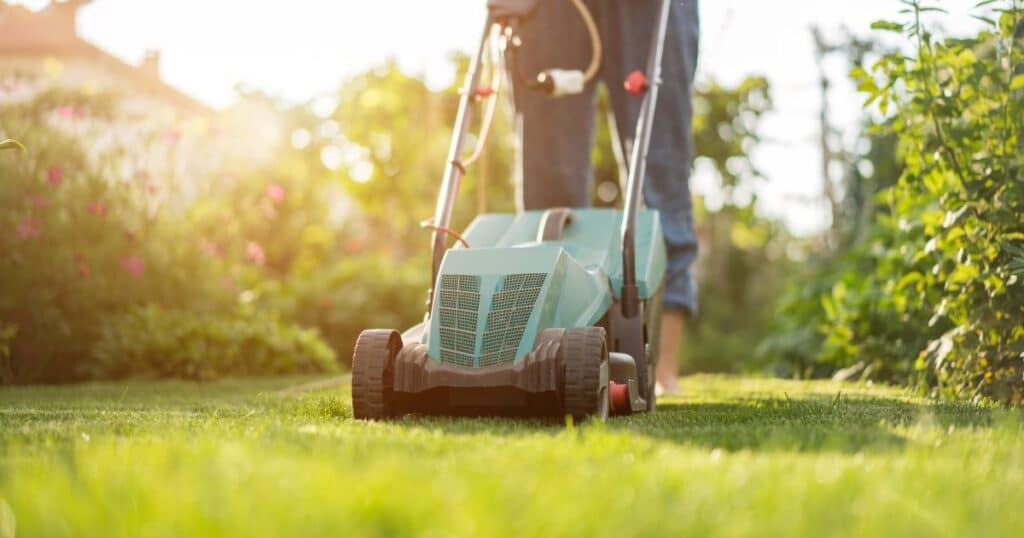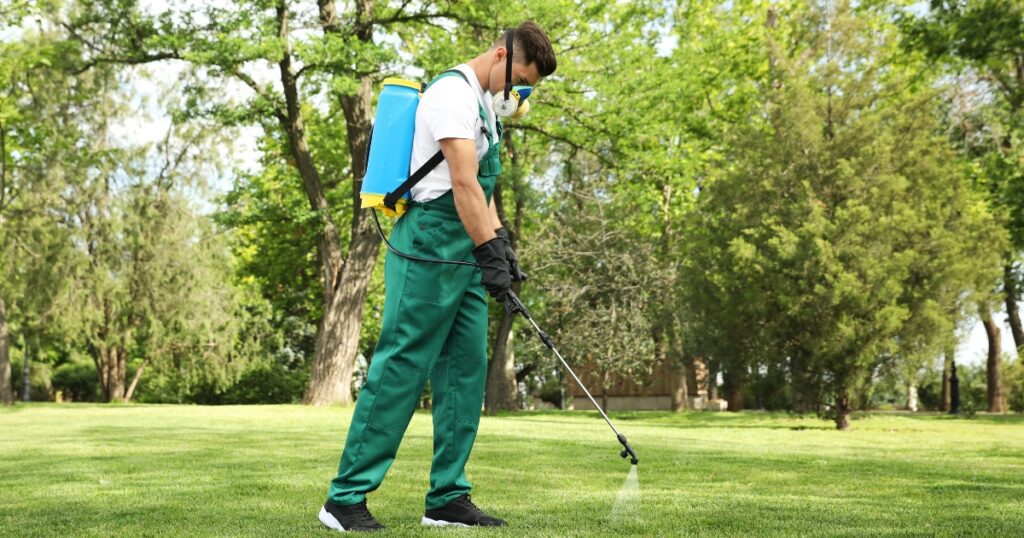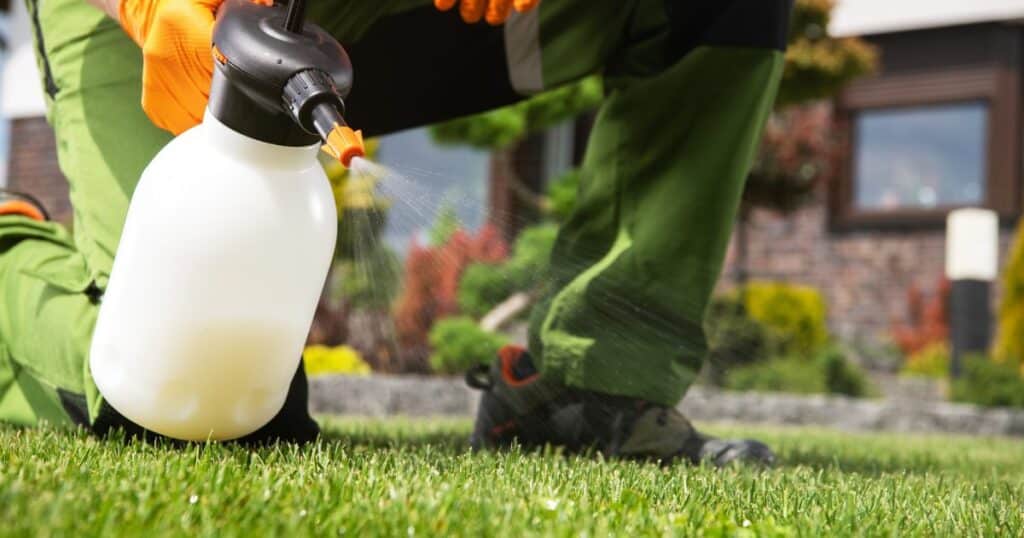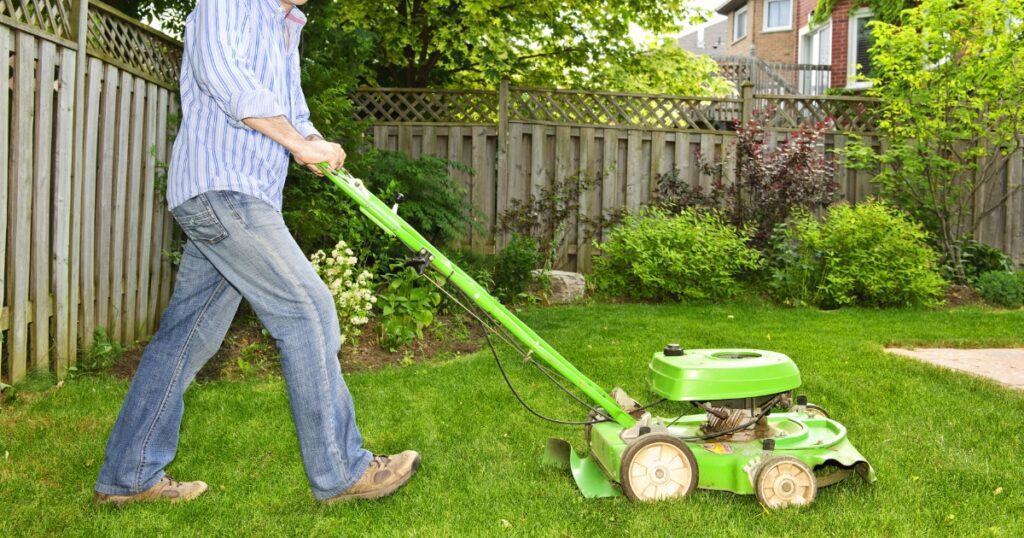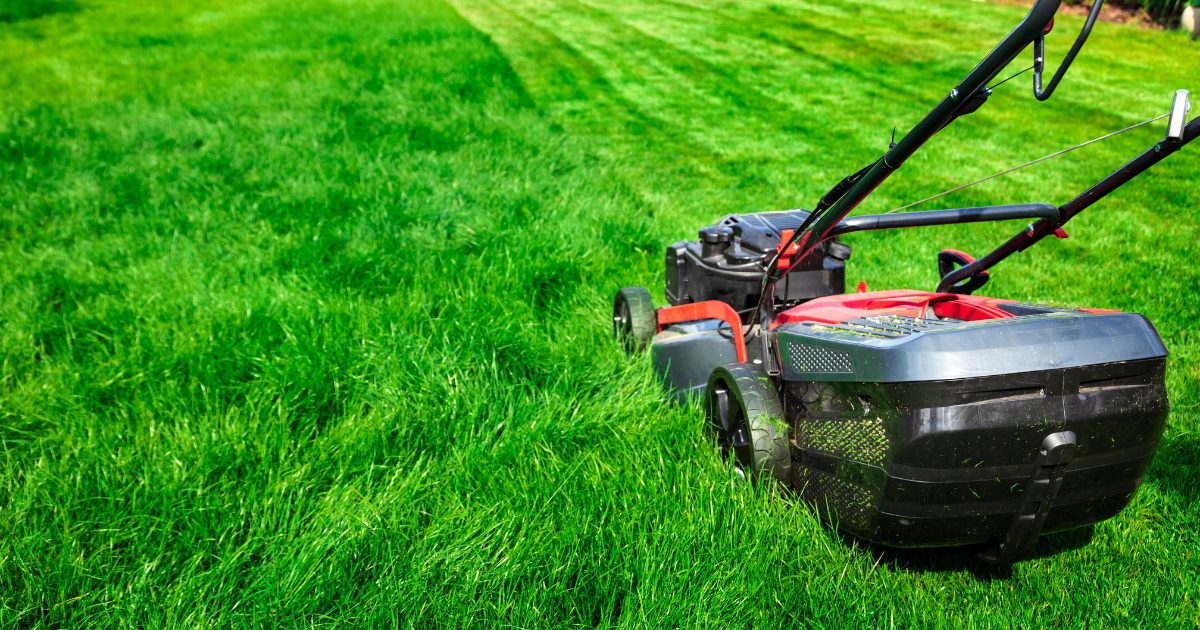
The Importance of Dallas Texas Lawn Care Schedule
Dallas, Texas, is well known for its hot and humid summers, which can take a toll on your lawn. Regular lawn care is essential to maintain a healthy and vibrant lawn throughout the year. Not only does a well-maintained lawn improve the curb appeal of your property, but it also enhances your outdoor living experience.
In addition to improving the aesthetic appeal of your property, a well-maintained lawn offers many benefits. The grass and trees absorb carbon dioxide from the atmosphere and release oxygen, which helps to reduce air pollution.
Lawns also absorb rainwater and prevent soil erosion. A healthy lawn provides a safe play area for children and pets while reducing noise pollution.
Purpose and Scope of This Article
The purpose of this article is to provide a comprehensive guide on how to care for your lawn in Dallas, Texas, throughout the year. This article covers all aspects of lawn maintenance, including fertilization, weed control, watering, pest management, and mowing techniques, among others that are important in keeping your yard vibrant and beautiful.
Whether you are new to Dallas or an experienced homeowner looking for ways to improve your landscape management skills in this region’s extreme conditions, this guide will be very helpful as we have included tips on how you can overcome challenges like pests or droughts that are common during the different seasons. By following this guide that is designed explicitly for lawns grown in Dallas, Texas, climate conditions combined with our expert tips on each season’s best practices over time, you will get used to maintaining a beautiful lush green yard that compliments any property’s overall aesthetic appeal.
Climate and Soil Conditions in Dallas, Texas
The Climate in Dallas, Texas
Dallas, Texas, has a humid subtropical climate characterized by hot summers and mild winters. The average temperature during summer ranges from 90°F to 95°F while winter temperatures range from the mid-30s°F to the low 60s°F. Additionally, Dallas receives an average annual rainfall of 37 inches, with most of it falling during the spring and fall months.
The high temperatures and rainfall patterns in Dallas create an environment conducive to plant growth which is beneficial for lawn care. However, this climate also poses some challenges to lawn care practices, such as drought conditions or excessive moisture that may lead to fungal diseases.
The Soil Conditions in Dallas, Texas
Dallas soil is predominantly clay soil with small amounts of sandy loams. These types of soils have poor drainage properties hence making it difficult for water and nutrients to penetrate deeper into the soil profile. This condition can lead to waterlogging which can result in root rotting or suffocation.
Moreover, clay soils often become compacted over time due to foot traffic or mowing equipment, leading to reduced pore space within the soil structure. This compaction makes it hard for roots to absorb air and nutrients leading to stunted growth or even death of plants, including lawns.
How do these conditions affect lawn care practices
The climatic conditions in Dallas require particular attention when dealing with lawns. High summer temperatures cause grasses like Bermuda grass or Zoysia grasses to become dormant if not adequately watered.
Improper watering can also lead to fungal diseases or pest infestation harming your lawn health. Clay soils require proper watering techniques like deep watering instead of frequent shallow watering, which enhances deeper penetration into the soil profile preventing runoffs or surface evaporation hence conserving water usage.
Additionally, since clay soils are easily compacted, lawn practices like aeration, topdressing, or overseeding are critical for proper soil aeration and nutrient uptake by roots. Overall, the climatic and soil conditions require careful attention to detail when it comes to lawn care practices in Dallas.
RELATED: Lawn Care Schedule Dallas Fort Worth
Spring Lawn Care Schedule
Preparing Your Lawn for Spring in Dallas, Texas
Spring is the time of year when your lawn begins to emerge from its winter dormancy. To ensure that your lawn stays healthy throughout the spring and summer months, it is important to take a few necessary steps during this time. One of the first steps you should take is to clean up any debris on your lawn.
This includes leaves, twigs, and any other clutter that has accumulated over the winter months. Once you have cleared away all debris, it’s time to begin aerating your lawn.
Aeration involves perforating your soil with small holes that allow water, air, and nutrients to penetrate deep into the root system. The next step in preparing your lawn for spring is fertilization.
It’s important to choose a fertilizer that is specifically formulated for lawns in Dallas, Texas, and apply it according to its instructions. Fertilizing will help promote healthy growth and give your lawn the nutrients it needs to stay green throughout the season.
Weed Control
Weeds are one of the biggest issues faced by gardeners when maintaining a beautiful landscape in Texas homes and businesses alike; they can be an eyesore on an otherwise pristine lawn. Springtime is crucial for weed control as they begin growing at this time of year when temperatures rise above 50°F.
The best way to keep weeds under control is by using pre-emergent herbicides before they appear. However, if weeds have already sprouted up, then there are several options available for controlling them effectively; hand-pulling or using chemical herbicides such as glyphosate or 2-4, D can be effective methods, but proper care must be taken when applying these chemicals so as not damage good grass nearby.
Mowing Tips
Mowing helps keep the grass healthy by promoting new growth and keeping it looking neat and trim. During the spring season, it’s recommended to mow your lawn once a week or as needed depending on how fast your grass grows.
When mowing, it’s important to keep your blades sharp for a clean cut that won’t damage the grass blades with jagged edges. Additionally, you should never cut more than one-third of the total height of your grass at one time; this will help prevent damage and stress to the turf.
Preparing your lawn in Dallas, Texas, for spring requires several key steps, including proper cleaning, aerating, fertilization, and weed control. Proper lawn care during spring ensures that you’ll have a healthy and beautiful lawn all year round.
Summer Lawn Care Schedule
The Heat is On How to Water Your Lawn in Summer
The summer heat can be brutal in Dallas, making it essential to water your lawn properly. It’s best to water early in the morning before the sun is too high in the sky, as this allows for better absorption and minimizes evaporation. You should also adjust your watering schedule depending on rainfall amounts and temperature changes.
A common mistake homeowners make is watering their lawns too frequently but with shallow watering. This results in weak root systems that can’t handle drought or heat stress.
Instead, it’s better to water deeply but infrequently, allowing the water to penetrate the soil and reach the roots. A good rule of thumb is to aim for 1-1.5 inches of water per week.
Pesky Pests: How to Control Them Without Harming Your Lawn
Summer is prime pest season in Dallas, with insects like chinch bugs and armyworms causing damage to lawns. However, it’s important not only to control these pests but also to do so without harming your lawn or the environment.
One way to control pests naturally is by using beneficial insects like ladybugs or nematodes that prey on harmful pests while leaving your lawn unharmed. You can also use organic insecticides made from natural ingredients like pyrethrins or neem oil.
If you prefer chemical insecticides, be sure to read the labels carefully and apply them according to instructions. Also, be mindful of where runoff may go when applying pesticides near watersheds or other sensitive areas.
Trimming Tips: How Often Should You Mow Your Lawn?
Mowing frequency depends on a few factors such as grass type and growth rate as well as weather conditions during summer months which can affect how often you need mow your lawn.. In general, you should aim to mow your lawn every 7-10 days during the summer months. It’s important not to cut your grass too short, as this can stress the lawn, making it more vulnerable to pests and weeds. Instead, keep your mower blades set at a higher level (about 3 inches) to promote healthy growth and shade the roots.
Also, be sure to alternate mowing patterns to prevent ruts from forming in your lawn. By following these tips for watering, pest control, and mowing during the summer months in Dallas, you can help ensure that your lawn stays healthy and looks great all season long.
Fall Lawn Care Schedule
As the summer comes to an end, it is time to start preparing your lawn for winter in Dallas, Texas. Proper fall lawn care ensures that your lawn remains healthy throughout the winter season and is ready to grow as soon as spring arrives.
Aerating Your Lawn
Aerating your lawn in the fall helps ensure that oxygen, water, and nutrients reach the roots of your grass. This process involves poking small holes throughout your lawn, which can help alleviate soil compaction caused by foot traffic or mowing.
Fall is an excellent time for this process as it gives plenty of time for recovery before winter sets in. You can rent a power aerator or hire a professional to do it for you.
Overseeding Your Lawn
Overseeding is a process where grass seeds are spread over existing grass. This helps thicken up sparse areas of the lawn and improve overall coverage.
It’s important to choose a type of seed that is well suited to the climate and soil conditions in Dallas, Texas. Fall overseeding gives seeds plenty of time to germinate and establish before winter sets in.
Fertilizing Your Lawn
Fall fertilization provides essential nutrients that strengthen roots during cold weather conditions so they can prepare for spring growth. A good fertilizer should contain higher levels of potassium and phosphorus, which will promote root growth over top growth, making sure your grass will have enough nutrients stored over the winter period. It’s suggested to have the soil tested prior to applying fertilizers by experts at local extension offices or garden centers who can give you advice on what fertilizer product will work best for your local conditions.
Mowing Your Lawn
Mowing should be adjusted accordingly beginning mid-fall when temperatures drop but not too low that it exposes the grass crown to extreme cold conditions. Taller grass also helps to protect roots and retain moisture.
Cut your lawn at a height of about 2 to 2.5 inches until the last mowing of the season make sure to cut it shorter to about 1 inch once growth starts slowing in preparation for winter. By following these fall lawn care tips in Dallas, Texas, you can ensure that your lawn is healthy and ready to weather through the winter months, allowing for a beautiful green lawn come spring time.
Winter Lawn Care Schedule
Winter is a tough season for lawn care in Dallas, Texas. Although the region doesn’t experience extreme winter conditions, it’s important to take good care of your lawn during this season to ensure its health and vibrancy for the following spring. In this section, we will provide a detailed guide on how to protect your lawn during winter and offer some tips on snow removal and other important activities.
Detailed Guide on How to Protect Your Lawn During Winter Season
The first step in protecting your lawn during the winter season is to make sure that it’s healthy and strong before the cold sets in. A few weeks before the first frost, give your lawn a final mow.
Set your mower blades low enough so that you can remove any leaves or debris from the surface of your lawn. This way, you’ll avoid leaving any dead material on top of the grass, which could suffocate it.
Next, take a soil test to determine if any nutrients are lacking in the soil. If so, fertilize accordingly with a slow-release fertilizer that will gradually release nutrients over time.
Consider overseeding cool-season grasses like fescue or rye if you have warm-season grasses like Bermuda or Zoysia. Overseeding cool-season grasses will keep your lawn green all year round.
Tips on Snow Removal and Other Important Activities
If snowfall occurs in Dallas during winter months (which is not common), be careful when removing it from your lawn, as it can damage grass blades if too much pressure is applied. Use a plastic shovel rather than a metal one since metal shovels can scratch or damage concrete surfaces leading to rusting and corrosion. Occasionally clear off snow or ice from areas around plants and trees as much as possible without causing harm – but only do this when temperatures are above the freezing point for safety reasons.
Clear off snow from hedges and evergreens when it accumulates to a weight that you think can damage them. During winter months, make sure that your lawn is clean and free of debris at all times.
Debris like fallen leaves can suffocate the grass and encourage the growth of disease-causing organisms. By keeping your lawn clean throughout winter, you’ll ensure that it remains healthy and looks its best come spring.
RELATED: Green Up Your Dallas Lawn: The Ultimate Lawn Care Calendar for a Lush Landscape
Niche Subtopics
How to deal with common pests like Chinch bugs or Grubs
A well-maintained lawn in Dallas, Texas, can add significant value to your property. However, annoying pests such as chinch bugs and grubs can cause damage in the lawn.
Chinch bugs are small insects that feed on the grass by sucking out its sap. Their feeding behavior causes patches of dead, brown grass in the lawn.
Grubs are also notorious for damaging lawns as they are larvae of different types of beetles that feed on the roots of grass, causing the soil to become loose and susceptible to erosion. To deal with chinch bugs and grubs, it is essential to have a pest control plan in place.
Early detection is crucial as both pests can cause significant damage quickly. Homeowners should keep an eye out for brown patches or irregular areas of dead grass and inspect them closely for signs of either pest.
If you find signs of chinch bug or grub infestations, there are some home remedies you may use before calling in professionals for help. For instance, applying insecticidal soap solution will kill off small infestation populations; however, severe cases would require professional treatment.
How to deal with droughts or extreme weather conditions like hailstorms or floods
Coping with extreme weather conditions such as droughts, hailstorms, and floods is a significant challenge for any Dallas homeowner who wants their lawns to remain healthy throughout the year. Lawn care during these times requires taking extra precautions. During periods of droughts where rainfall becomes scarce, it’s important to water your lawn properly and efficiently using irrigation systems like sprinklers or drip lines connecting your garden hosepipe.
Water early mornings between 6-10 am when temperatures are cool enough, which reduces evaporation rates allowing more water absorption by plants’ roots. Hailstorms can be devastating to lawns, resulting in severe damage.
The best way to protect your lawn from hailstorm damage is by covering it with a thick layer of mulch (shredded leaves or pine straw). Mulch protects the grass blades and soil from being pelted by the hailstones.
Floods can also pose a significant threat to lawn health because of the increased moisture levels, which create an ideal environment for disease-causing microorganisms and pests like mosquitos. Proper drainage systems are critical to preventing flooding in your lawn.
You may consider having a professional install drain pipes or French drains that will redirect water away from your yard or plant grass species that are more tolerant of wet ground conditions. Having a basic understanding of how to deal with common pests like Chinch bugs and Grubs, as well as extreme weather conditions like droughts, hailstorms and floods is crucial for maintaining a healthy lawn in Dallas Texas all year round.
Rarely Known
Beneficial Insects for Lawn Care
Not all insects are pests, some are beneficial to lawn care. Beneficial insects help to control pests and diseases without damaging plants in your lawn.
They include ladybugs, lacewings, bees, and hoverflies. Ladybugs feed on aphids and mealybugs, while hoverflies eat aphids and thrips.
Bees are important pollinators that help to keep flowers blooming, while lacewings feed on insect eggs and small insects like mites. By inviting beneficial insects into your lawn, you can reduce the need for pesticides which can be harmful to the environment.
The Importance of Soil pH Testing
Soil pH is a measure of how acidic or alkaline soil is on a scale of 1-14, with 7 being neutral. Most grasses prefer slightly acidic soil with a pH level between 6-7, so it’s essential to know the pH level of your soil before fertilizing or planting anything in it. A higher than normal pH level can lead to nutrient deficiencies in grass, while low levels can cause toxicity resulting in stunted growth or death of plants.
Frequently Asked Questions
What is the best lawn fertilization schedule?
The best lawn fertilization schedule depends on the type of grass and the climate of your area. In general, warm-season grasses should be fertilized in the spring and fall, while cool-season grasses should be fertilized in the fall and spring.
How do I get green grass in Texas?
To get green grass in Texas, you can fertilize your lawn with a nitrogen-rich fertilizer, water it regularly and deeply, mow it at the correct height, and control pests and weeds. It’s also important to perform soil testing and amend the soil with nutrients and organic matter if necessary.
What is the best fertilizer for summer in Texas?
The best fertilizer for summer in Texas is one that is high in nitrogen, as nitrogen promotes leaf growth and helps to keep your lawn green. It’s also important to choose a fertilizer that is appropriate for the type of grass in your lawn.
Why you shouldn’t mow your lawn every week?
Mowing your lawn too frequently can cause stress to the grass and lead to a weakened lawn. It’s important to mow your lawn at the correct height and frequency for the type of grass and growing conditions in your area.
How do you take care of a lawn in Texas?
To take care of a lawn in Texas, you should fertilize it regularly, water it deeply and infrequently, mow it at the correct height, and control pests and weeds. It’s also important to perform soil testing and amend the soil with nutrients and organic matter if necessary.
When should I start watering my lawn?
The ideal time to start watering your lawn depends on the climate and soil conditions in your area. In general, it’s recommended to start watering your lawn when the top inch of soil is dry, which is usually in the early morning or late evening. It’s important to water deeply and infrequently, providing about 1 inch of water per week, depending on the weather and soil conditions.
Conclusion
A beautiful lawn requires proper care and maintenance throughout the year. With this comprehensive guide on Dallas Texas Lawn Care Schedule, you should now have a better understanding of what it takes to keep your lawn lush and green all year long by following specific schedules designed for each season.
It may seem like hard work at first, but taking proper care of your lawn will save you money in the long run by reducing costs associated with pest control, plant replacement, etc. By following these tips on rarely known aspects, such as using beneficial insects and testing soil pH levels regularly, you will also be able to take better care of your lawn without damaging the environment or causing harm to pets and children.
With a little patience and attention to detail, you can have a lawn that is not only visually appealing but also healthy for everyone. So, start taking care of your lawn today with the help of this guide and enjoy the many benefits that come with it!

